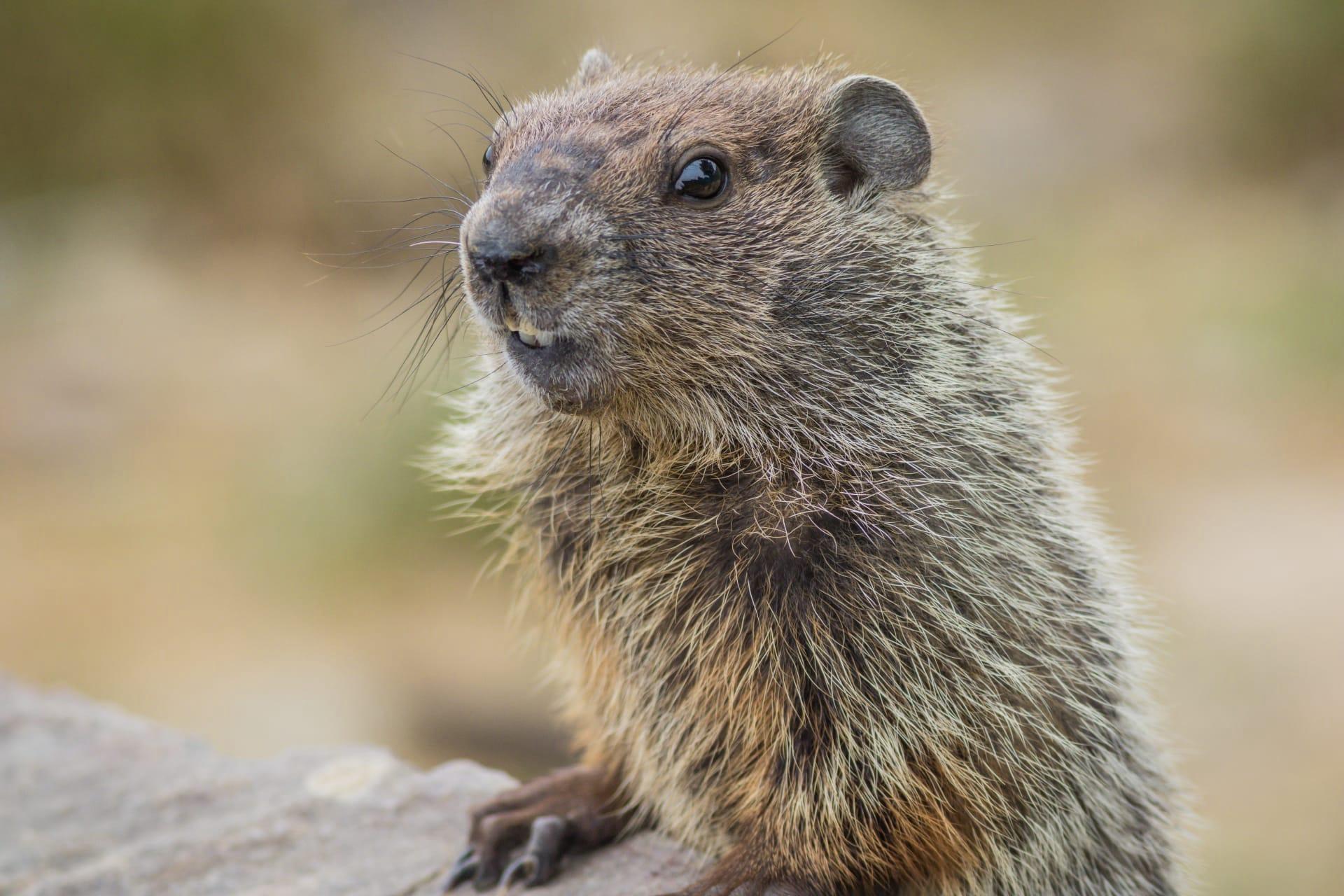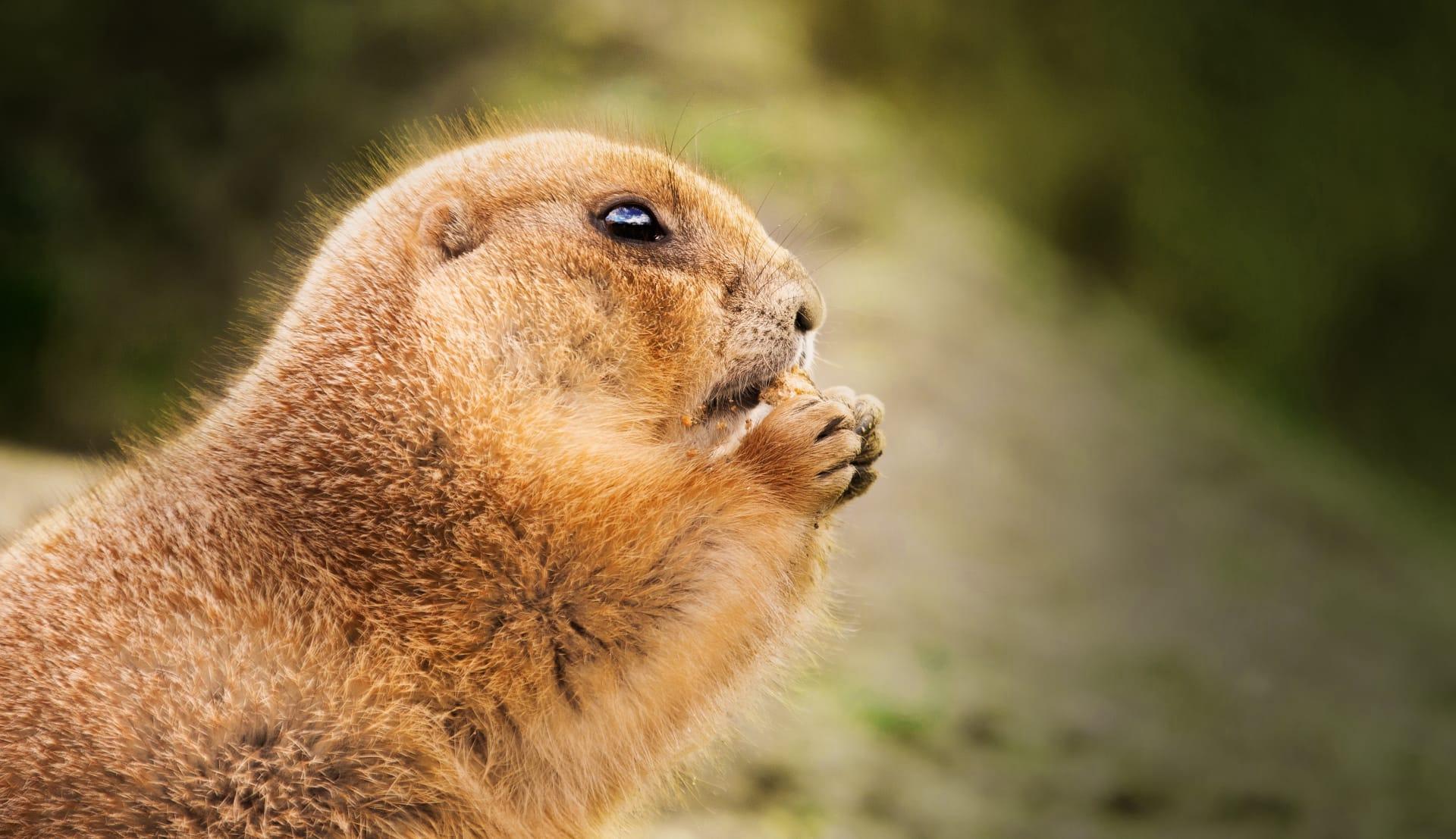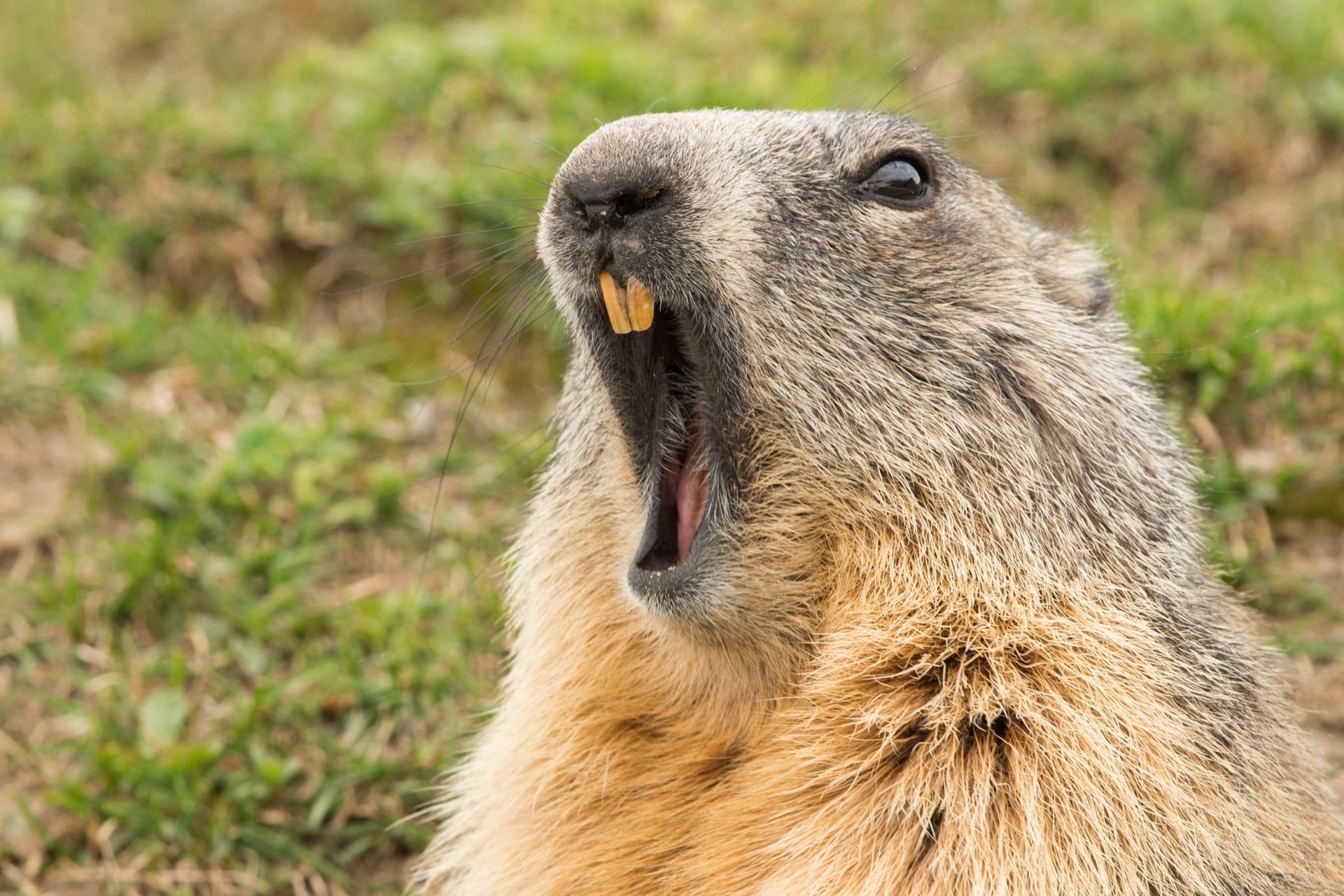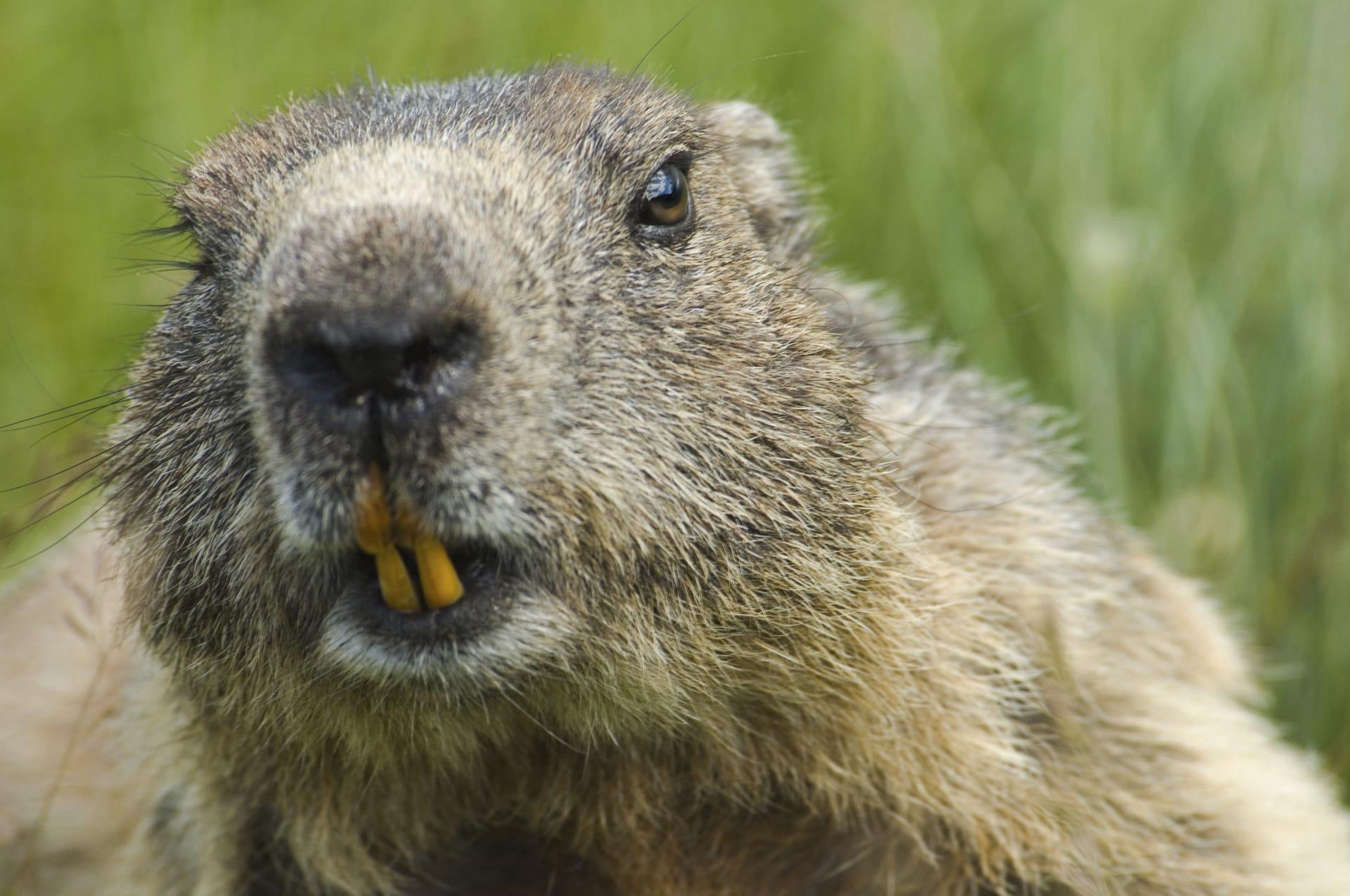Groundhog
- Home /
- Mini Encyclopedia /
- Animal /
- Groundhog
1
The groundhog, scientifically known as Marmota monax, belongs to the rodent family Sciuridae, which includes squirrels and chipmunks. This species is one of 14 members of the Marmota genus. Groundhogs are distinguished by their stout bodies, short legs, and bushy tails, typically measuring about 20 inches in length. Their fur is usually a grizzled brown color, aiding in camouflage in their natural habitat.
Groundhogs are widely distributed across North America, extending from the eastern United States, across Canada, and into Alaska. They thrive in a variety of habitats including forests, fields, and gardens. These creatures are especially common in areas where open fields meet wooded lands, providing them with ample food sources and burrowing opportunities. Groundhogs dig extensive burrow systems, which can be over 6 feet deep and 20 feet wide, with multiple entrances for safety and convenience.

2
Question: Do groundhogs really predict the weather?
Answer: It's a common belief, especially in North America, that groundhogs can predict the arrival of spring. This myth stems from the tradition of Groundhog Day, where if a groundhog sees its shadow on February 2nd, it indicates six more weeks of winter. However, this is a folklore and lacks scientific evidence. Groundhogs, like many animals, respond to environmental cues and changes in daylight, not the ability to forecast weather patterns.

3
Groundhogs have evolved several strategies to survive in their environments. One notable behavior is hibernation. During winter, groundhogs enter a state of hibernation in their burrows. This involves significantly lowering their body temperature, heart rate, and metabolism to conserve energy. This hibernation can last for up to six months, depending on the climate.
Another survival strategy is their diet flexibility. Groundhogs are primarily herbivores, feeding on a variety of grasses, fruits, and plants. However, they can occasionally consume insects and small animals, showcasing their ability to adapt their diet based on availability. This dietary adaptability helps groundhogs survive in diverse environments.

4
In the ecosystem, groundhogs play a crucial role in soil aeration and turnover. Their burrowing activities help in mixing different soil layers, which enhances soil health and fertility. This in turn benefits plant growth, impacting the broader ecological system.
Groundhogs also serve as a vital food source for many predators, including foxes, hawks, and snakes. This positions them as an integral part of the food chain. Additionally, their abandoned burrows provide shelter for a range of other wildlife, such as rabbits, skunks, and reptiles, thereby contributing to the biodiversity of their habitat.

5
Film: One notable documentary featuring groundhogs is "The Private Life of the Gopher", produced by the National Geographic Society in the United States. Released in the late 1990s, this film explores the daily life, behavior, and survival tactics of groundhogs, giving viewers an intimate look into their underground world.
Book: "Groundhogs: Woodchucks, Marmots, and Whistle Pigs" by Richard W. Thorington Jr. and Katie Ferrell, published in the United States in 2006, offers a comprehensive guide to these animals. It covers their biology, behavior, and role in folklore, making it a fascinating read for wildlife enthusiasts.
Book: Another informative book is "The World of the Groundhog" by William H. Burt, published in the United States in the early 2000s. This book delves into the natural history of groundhogs, including their habits, habitats, and the myth surrounding Groundhog Day. Burt's work is both educational and engaging, making it an excellent resource for anyone curious about these intriguing creatures.